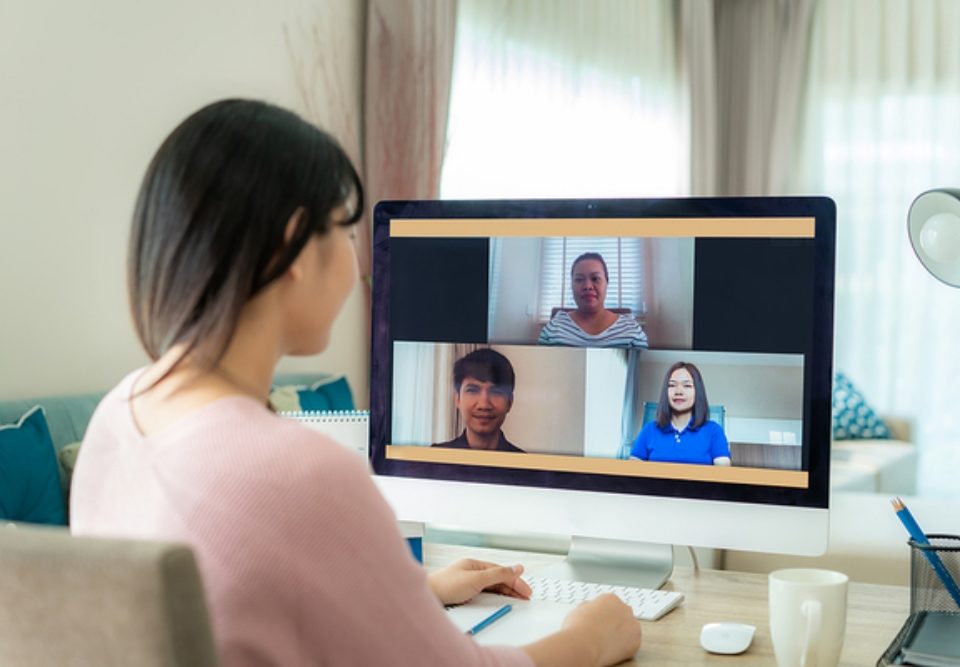Computer Monitoring Software Helps Defeat Social Engineering Threats
June 25, 2018High-Profile Incidents Highlight Need for Employee Monitoring Software
July 16, 2018Employee Monitoring Software for Remote Workers

Employee monitoring software can be helpful for your business. It improves your data security, prevents time theft, and ensures that mistakes are caught before they get out of control.
Take a look at what you need to know about using employee monitoring software, how to choose the software that’s right for your company, how to use monitoring to catch time theft and how software affects your company’s employee policies.
The Value of Transparency
No one likes to feel that they’ve been spied on without their knowledge. Your employees will be happier if your company policies are transparent.
For the most part, the law is on your side when it comes to employee monitoring software and other employee monitoring strategies. As long as you don’t violate obvious private spaces – you can’t place cameras in the bathroom, for instance – your employees have very little expectation of privacy in the workplace. The same goes for work-related devices – if you’re issuing company phones, computers, or tablets, you can install any software you like, including monitoring software.
But just because you can do these things without notifying your employees doesn’t mean that you should. Your workers are people, and they have feelings just like anyone else. They want to come to a workplace where they feel trusted, and they want to trust the people that they work for. If they discover that they’ve been monitored without their knowledge, they’re liable to feel betrayed, no matter how legally acceptable that monitoring may be. Letting them know up front that they’ll be monitored removes that feeling of betrayal – they’ll just see the monitoring as another facet of the workplace.
Being forthright about your employee monitoring policy may also act as a deterrent. When employees assume they’re not being monitored, it can be easy to get in the habit of doing things like checking personal emails or Facebook notifications on company devices just because it’s convenient. And while that kind of thing may seem inconsequential in small doses, it can add up to a lot of lost time over time – and once an employee is in the habit, it can be difficult to stop and easy to spend more and more time on non-work-related sites. Letting employees know up front that they’re being monitored can prevent this habit from forming in the first place.
Put Monitoring Policies in Writing
A clearly written IT policy ensures that you’re protected and your workers are informed.
The best way to make sure that you’re being transparent about your company’s monitoring policies is to put it in writing. And because employee monitoring software is an IT issue, the best place to include that information is in your company’s IT policies.
Make it clear in your policies what devices you’re monitoring and how you’re monitoring them. Use clear, concise language that any of your employees should be able to understand – remember that not all of your employees will necessarily be highly technically savvy. There’s nothing to be gained by using technical jargon that may not be understood by all employees. Make sure that you require employees to read and sign your company’s IT policy. That way, you’ll have proof that they were made aware of your policies up front.
Being open and transparent is important, too, because often monitoring data can come up inadvertently during employee reviews. Maybe data revealed that an employee was wasting time surfing online instead of working. Time theft is all too common, but disclosing that you’re monitoring their time and how they use it means they won’t be blindsided.

Time Theft: The Clock is Ticking and Money is Burning
Most employees have every intention of staying on top of their workload, but it’s not uncommon for distractions to get in the way. Workplace distractions result in productivity losses that cost businesses billions of dollars every year, so your company can really save money if you can get a handle on those distractions.
The internet is a huge temptation for some workers; online activities can easily and quickly suck up time. We’ve all gone down the Google rabbit hole, and sometimes the internet just leads to hours of wasted time. Time theft can happen in other ways, too; before the glut of technology, employees gathered to chat in the break room or by the water cooler. Chatting with co-workers beyond work discussions can lead to time being wasted. Extra long lunches also could be another form of time theft.
So What’s Killing Your Employees’ Productivity?
Smartphones are one of the major distractions for employees today.
You might not be too surprised to learn that smartphones are one of the top distractions in the workplace. Your employee’s smartphone offers an instant connection to the entire internet (the internet itself is also commonly listed as a distraction) as well as text messages, gaming apps, and other features. It’s very easy to get sidetracked by a phone notification.
Social media is another commonly listed distraction. An employee might simply intend to scroll through a few recent notifications or respond to a message between tasks, but it’s easy to get caught up and lose track of time. In fact, most social media sites are designed specifically to encourage such time loss. And emails can be a frequent source of distraction as well. Even work-related emails can get a worker off-task if the worker feels that answering or checking emails is more important than other types of work.

How To Handle Internet-Based Distractions
Before you can figure out how to address productivity loss from these common distractions, you need a way to measure what’s happening, when it’s happening, and who is affected. Employee monitoring software can give you the data that you need to determine who is spending work hours shopping online, who is spending too much time answering text messages, and who needs training to help them prioritize email and other tasks.
Employees who are distracted at work are not necessarily bad employees, but the distractions do need to be addressed for them to do their best work. It’s likely that some don’t realize how much of their work time is being eaten up by outside activities, or they do realize but are having trouble regaining their focus. With accurate information, you can help these employees perform up to their potential.
Transforming Data into Policy
Stronger social media policies can help your company prevent common workplace distractions.
Once you have the data from your employee monitoring software, you can use it to help you implement workplace policies that encourage your employees to stay on task. That doesn’t necessarily mean that you need to micromanage their internet use, but you may need to craft a better company social media policy or implement rules about personal smartphone use during working hours.
In some cases, just knowing that they’re being monitored will help employees exert some more control over their own online behavior. Your employees may not want the company having access to their social media information or Amazon shopping history, and an easy way to prevent that is for the employee to simply refrain from doing non-work related tasks on monitored company computers.
What Software Is Best for Your Company?
Employee monitoring software can improve an organization’s bottom line, keep employees on task and have other benefits as well. But that doesn’t mean that you can choose just any employee monitoring software and get the results that you’re looking for. You will need to choose a type of employee monitoring software that has the features and capabilities that your organization needs in order to get the outcome that you want.
Take a look at some of the things that you should be looking out for in employee monitoring software. Knowing what features to look for can help you choose the best employee monitoring software for your company.
Improve Your Time-Tracking System
Employee monitoring software can also improve your ability to keep track of when your employees are coming and going from the workplace. Keeping accurate track of hours worked is good for both employees and the company they work for. It ensures accurate paychecks for your employees and ensures that you’re not overpaying for the hours that your employees are working.
Look for employee monitoring software that comes with tools that allow you to track the hours that your employees work and monitor when they leave and return for breaks and meals, as well as track overtime, vacation and sick hours, and other things that affect wages.
Protect Your Company Network
Employee monitoring software lets you know which employees need further security training.
When it comes to protecting your organization, cyber protection should be high on your priority list. If your company network is compromised, it can put sensitive data, proprietary information, and even the structure of your network in danger.
How can employee monitoring software help? When it comes to network and data security for businesses and organizations, employees are often the weak point. It’s common for employees to make mistakes that cause vulnerabilities in the company network. Visiting insecure websites, opening unsafe attachments in email, and falling for phishing attacks and other scams are some of the ways in which employees put the company network at risk without meaning to.
There are also situations in which employees maliciously act out against the companies they work for, either out of spite or for some type of compensation. Employees who have recently been passed over for promotion or demoted, employees who are in personal financial trouble and employees who are at risk of being blackmailed are the ones who are most likely to try to compromise a company’s network from the inside.
Employee monitoring software can help protect your company from both careless mistakes and malicious acts by employees. Look for software that allows you to set alerts for suspicious activities, like attempting to access files that should be off-limits, downloading or printing unusual numbers of files, or accessing the system from out of the office or outside of normal working hours for that employee.
With the right employee monitoring system, you can spot patterns that suggest a problem, repair vulnerabilities, and put a stop to malicious actions before they get out of control and threaten your organization. This will also give you the information that you need in order to better train employees so that they can avoid dangerous mistakes that could compromise your network.

Customize Your Experience
Your organization is unique. The monitoring experience that best suits your needs may not be the same monitoring experience that best suits the needs of the business next door or of your closest competitor. This means that it’s important to avoid one-size-fits-all solutions. No matter which features mean the most to you, you should be looking for employee monitoring software that is customizable for your needs.
You will want the ability to set up alerts, monitoring, and custom reports as needed, and to make changes as your company’s needs change. Look for software that is intuitive to use and offers a high degree of customization. With the right software, you’ll be able to create a monitoring system that meets your needs and the needs of your employees.
Choosing the right monitoring software for your company is a big decision, and it shouldn’t be taken lightly. One way to find out if a monitoring software is right for your company is to try it out before you buy it. To get a feel for how monitoring software could work for your company, start your risk free 7-day trial.



